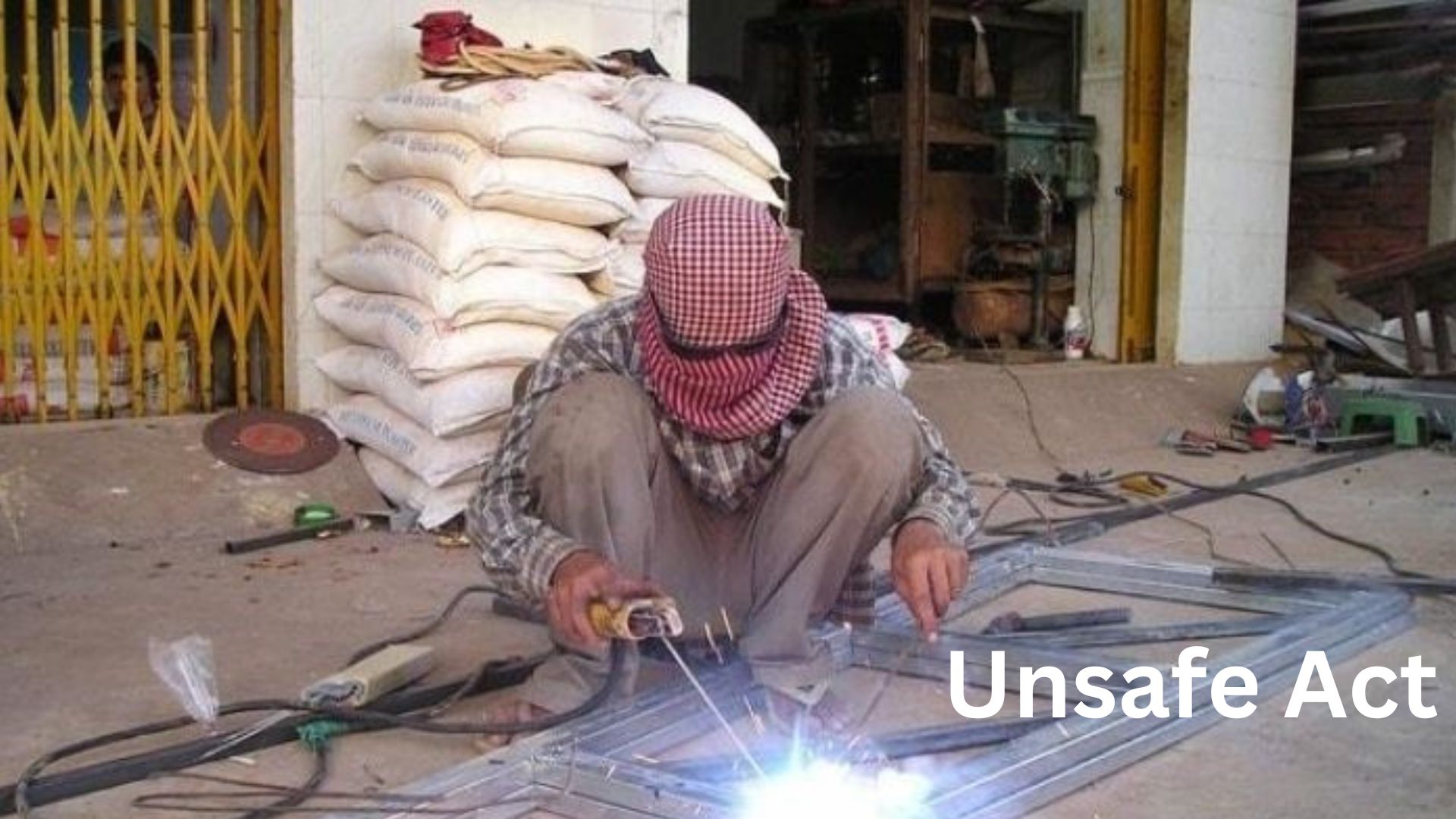Today our toolbox topic is "Unsafe Act". There are many meanings that a word can have, it all depends
on who uses it and how it is used. Let's take a look at the word SAFETY. We all
have heard this word, but what does it mean? If you go to talk to an army
general about safety, he will start talking about quantities of weapons,
planes, tanks, strategic plans to counter the enemy's force in case of an
attack, etc.
But when we hear the word safety in the workshop, all of us know the meaning of safety, such as how to avoid physical injuries that will affect us, as well as our families. The biggest threat to "our safety" is accidents. Today I want to talk to you a little more about the cause of the accident “unsafe act”.
Unsafe act definition
The unsafe acts are the failures, forgetfulness, errors, or
omissions that people make when carrying out a job, task, or activity and that
could put them at risk of suffering an accident.
These reckless actions can be carried out by workers due to
the need to do the job quickly, ignoring safety measures, the use of tools
correctly, and the correct use of personal protective equipment
If they want to continue working and receive the paycheck to
take care of the family regularly, they have to be in good health and safety.
It is difficult for someone to pay them to be in a hospital.
If you want your house to serve as protection for your family, you must be in it to take care of it. But if you have an accident
that kills or permanently disables you, who will have to assume the
responsibility of earning a living for the rest of the family, continuing to
pay the mortgage on the house, and finding the money so that the children have
everything they need? So the question is, why do you work safely?
Example of an unsafe act
Let's look at some examples of unsafe acts that lead to
injury:
- Perform tasks without instruction, information, and training
- Adopting incorrect postures in the workplace especially when lifting loads.
- Using equipment or tools that are in poor condition.
- Using tools incorrectly.
- Failure to respect signs or area delimitations.
- Keep the work area uncluttered.
- Operating equipment without proper training
- Not using personal protective equipment (PPE)
- Disabling safety devices
- Horseplay or distractions
- Working while fatigued or under the influence
We all have a role to play in preventing unsafe acts
- Identify potential hazards: Be proactive in spotting risks in your work environment.
- Follow safety procedures: Always adhere to established safety guidelines and protocols.
- Use the right tools and equipment: Ensure you have the appropriate tools and that they're in good condition.
- Wear PPE: Protect yourself from hazards by using the required PPE for your tasks.
- Communicate effectively: Report any unsafe conditions or concerns to your supervisor immediately.
- Speak up: If you see a coworker engaging in an unsafe act, respectfully address it or report it to prevent potential accidents.
Conclusion
Preventing unsafe acts is crucial to ensuring everyone goes
home safely every day. Unsafe acts are choices or behaviors that deviate from
safety rules and procedures. They're a leading cause of workplace accidents and
injuries.
Let's work together with mass toolbox meetings to create a
culture of safety where everyone feels empowered to make safe choices and look
out for one another. By making safety a priority and working together, we can
create a workplace where everyone can thrive and feel safe.
Create a positive safety culture throughout the company, which
includes raising awareness of self-care and safe work procedures, this can be
to ensure that employees properly use their protective equipment, as well as
that they avoid overlooking the procedures. They are considered safe.


